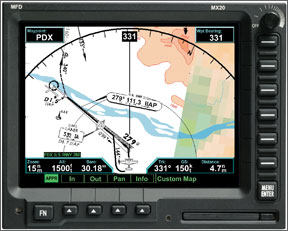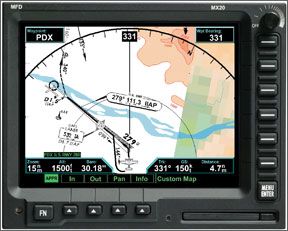I am a longtime subscriber to Aviation Safety and recommend your publication to my clients as the best aviation magazine out there. However, in your August issue, the article on IFR GPS had what I believe were a few errors in an otherwise informative article. The author describes DH (decision height) as a height above sea level and DA (decision altitude) as “above runway.” This explanation is likely to confuse people trying to understand this concept because it is the opposite of the correct definition. 288 Instead, DH is an agl altitude and DA based on msl. The FAA describes it similarly, using a few more words, as follows: “Decision Altitude/Height (DA/H): A specified altitude or height (A/H) in the precision approach at which a missed approach must be initiated if the required visual reference to continue the approach has not been established. Note 1: Decision altitude (DA) is referenced to mean sea level (MSL) and decision height (DH) is referenced to the threshold elevation.” The other statement with the potential to cause confusion was, “a WAAS box will automatically suspend when you pass the missed approach point,” which might lead one to think that a non-WAAS GPS will not. In fact both non-WAAS and WAAS GPS navigators suspend when passing the MAP. Dave Simpson, Author Tom Turner responds: “Youre right. Although pilots reference the altimeter, and therefore a msl altitude, to determine the missed approach point on a precision approach, the FAAs Pilot/Controller Glossary defines DH as a height above ground level. This is the “200” in 200-and-a-half minimums for most ILS approaches (only pilots with radar altimeters are actually referencing an agl altitude to determine DH. Decision Altitude (DA) is defined as altitude msl, and is read directly from a properly set altimeter. “It also is correct that a non-WAAS GPS enters suspend mode after crossing the missed approach point. Thank you for your comments and for helping us clear up any confusion this may have caused.” A Couple Of Comments A couple of comments after reading your July issue. Regarding “Zero-Zero Departure” (Accident Probe): The clich in the military is that folks are given a “special card” for zero-zero only when theyre smart enough not to use it. Nowhere in this article does it seriously ask why a zero-zero departure is really necessary. Zero-zero arrivals are the result of gradually working yourself into a box over the course of flight planning and the flight itself. However, every trip to the airport does not have to end with a flight. Safety is not just about training or equipment-it is about being smart enough not to have to use all your training and equipment to get you out of a box of your own creation. I look forward to your expanded discussion on pattern arrivals, and must admit that Im not a fan of those arriving opposite the pattern maneuvering to enter via straight-in, as it seems to me theyre forcing their way in. Id prefer to see someone join the crosswind or fly above the pattern and join from the other side, though Im sure there are as many opinions as points on the compass. I chuckled at seeing the reference to “Coach” Carson (“Maximum-Range Speed” sidebar, page 19); he was a great professor at the U.S. Naval Academy who watched out for those of us struggling to get through the program. The range metric you cited is in character with someone who, in my experience, really was curious about and loved all things aviation. Thanks for keeping the discussion flowing. I subscribe because I appreciate the effort youre making to discuss safety in the same way that Approach does for the U.S. Navys aviation community. A good pilot learns all the time, not just in the cockpit. Rich Romaine, Thanks, Rich, for the comments. Were working up a feature article on zero-zero departures for Octobers issue. Traffic patterns will get the treatment in December, if current plans stay the same.
El Cajon, Calif.
Via e-mail




